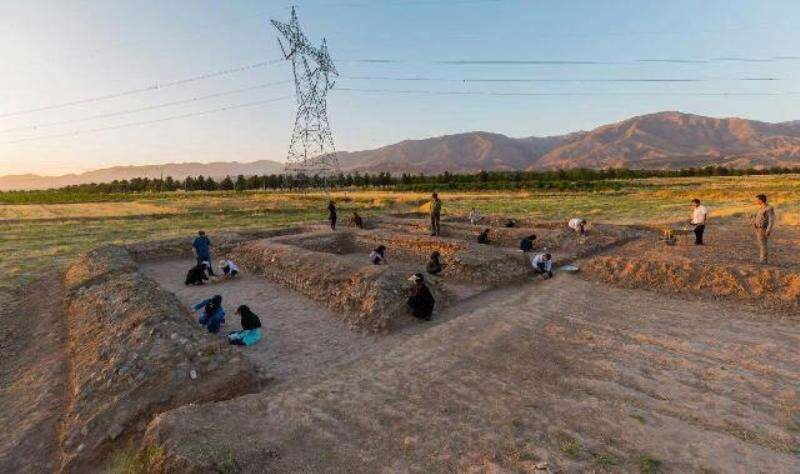Haj Bektash Vali Hill, symbol of Iran's mystical history and culture

TEHRAN--Haj Bektash Vali Hill in Neyshabur, Khorasan Razavi province, is a prominent symbol of Iran's mystical history and culture, which has the potential to attract domestic and foreign tourists, an archaeologist said.
In an interview with ISNA, Abolfazl Zahedi stated that Haj Bektash Vali Hill is one of the most important cultural and historical monuments in Iran, adding that this place is the birthplace of Haj Bektash Vali, the great mystic and founder of the Bektashi sect, and has attracted a lot of attention due to its profound cultural and spiritual influences.
Referring to the history of the hill, he stated that Haj Bektash Vali was born in Neyshabur in the 7th century AH and is known as one of the prominent mystical figures. He has had a profound impact on Sufism in Iran and various mystical sects, he added.
Stating that Haj Bektash Vali Hill, as his burial and memorial site, has always been of interest to his followers and those interested in mysticism, he discussed the cultural impact of Haj Bektash Vali on the society of that time. “His teachings spread not only in Iran, but also throughout Central Asia and Turkey. As a mystic and teacher, he emphasized the concepts of love, humanity, and unity, and this attracted many followers to him.”
Zahedi also discussed the spiritual importance of this place, saying: “Haj Bektash Vali Hill is valuable not only for followers of the Bektashi sect, but also for all those interested in Islamic history and culture.”
He added that Haj Bektash Vali is a transnational figure, known not only among Iranians, but also among Turks and other nations.
Referring to the tourism potential of this place, he said that Haj Bektash Valley Hill can be recognized as an important tourist attraction in Neyshabur. The rich and spiritual history of this place has made it an attractive destination for domestic and foreign tourists, especially those interested in history and mystical culture can visit this place, he added.
He mentioned Neyshabur as one of the historical cities of Iran that has many cultural and natural attractions and noted that Haj Bektash Vali Hill, as a central point in this regard, can help attract tourists.
Zahedi continued that the Fushenjan site, which is the birthplace of Haj Bektash Vali, was registered under number 24383 on National Heritage List on January 13, 2008.
He stated that the national registration of this monument has helped to protect and maintain it and has increased public awareness about the history and culture of this important figure.
The archaeologist also emphasized the importance of protecting this place, adding that the protection of historical monuments should be prioritized.
Haj Bektash Vali Hill is a valuable cultural heritage and requires special attention and care so that future generations can also benefit from it, he mentioned.
Zahedi went on to point out the challenges that may exist in the path of preserving and developing tourism at this site, saying: “One of the main challenges is the lack of financial resources and the lack of sufficient attention to this site. To preserve and maintain this monument, we need appropriate planning and investment.”
He stated that the historical and cultural importance of Haj Bektash Vali Hill and its potential for developing tourism in Neyshabur are very important, adding “Haj Bektash Vali Hill should be preserved as a source of inspiration for future generations."
Muhammad ibn Ibrahim ibn Musa al-Khorasani, a Shia mystic of the 7th century AH, is known in Turkey as Haj Bektash Vali. He was born in Fushenjan, Neyshabur, and migrated to Asia Minor at the age of about 40. Haj Bektash Vali died at the age of 62. His followers, known as Alawites, are scattered throughout Turkey, the Balkans, Albania, and Germany.
In ancient times, Neyshabur was home to many great men of science, art, and culture and today it hosts tourists who go to visit the relics of that period.
Situated some 70 km west of Mashhad, Neyshabur was founded around the third century CE. Narratives say the town derived its name from its alleged founder, the Sassanid king Shapur I.
It grew to prominence in the eighth century and was ruined by invasions and earthquakes in the thirteenth century. After that time, a much smaller settlement was established just north of the ancient town, and the once-bustling metropolis lay underground—until a team of excavators from the Metropolitan Museum arrived in the mid-twentieth century.
The ancient city underwent rounds of excavation as of 1935 by experts from the Department of Near Eastern Art at The Metropolitan Museum of Art. According to the Metropolitan Museum of Art, its affiliated archaeologists worked at Neyshabur between 1935 and 1940, returning for a final season in the winter of 1947–48.
The excavators had been drawn to the city due to its fame in the medieval period as a regional capital and it was home to many religious scholars. It was also known as an economic center.
Neyshabur was once situated on the famed Silk Roads, which ran from China to the Mediterranean Sea, crossing Central Asia, Iran, Iraq, Syria, and Turkey along the way.
Greater Neyshabur has more than 500 identified historical monuments and sites, including the tombs of great personalities such as Khayyam, Attar, the tomb of Kamal ol-Molk, the historical caravanserais of Shah Abbas, and Qadamgah Razavi. In addition, the largest historical site in the country, covering an area of more than 4,500 hectares, is located in Neyshabur.
The ancient Iranian city of Neyshabur holds considerable potential to become a destination for international sightseers.
KD
Leave a Comment